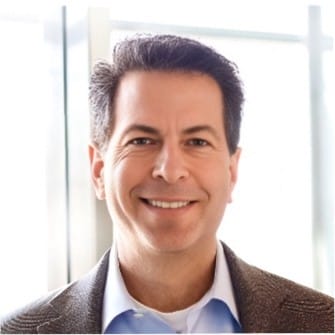In aviation, every crew member in a C-5 Galaxy isn’t chosen simply because they can recite protocols or flash a friendly smile—they’re vetted on their behaviors, skills, and ability to work cohesively during high-pressure operations.
In business, especially when it comes to hiring for the most important job of building a high-performing team, the stakes are just as high. Too many leaders “wing it” by hiring based solely on charm, past experience, or gut feeling, only to later discover that these hires don’t perform when the real challenges begin. Like a pilot depending on a consistent pre-flight checklist, hiring done right is about screening for the right behaviors that will ultimately drive success.
The Pitfalls of “Winging It” in Hiring
When leaders rely on how much they like a candidate or the impression of a flawless résumé, they risk assembling a crew that looks good on paper but falters under pressure. Consider this: you might hire someone with decades of experience, much like an experienced driver behind the wheel—but if that driver is consistently involved in minor accidents because they lack situational awareness or fail to adhere to proven safety protocols, experience alone is not enough.
In the same way, hiring decisions made on personal affinity instead of objective behavioral assessment can create vulnerabilities in your organization. The risk? High-performing teams require more than just technical skills; they demand behaviors that align with your mission and values to ensure that every decision, every process, and every interaction contributes to overall success.

Behaviors Over Buzzwords
Many companies mistakenly rely on “experience” as the primary hiring criterion. The problem with this approach is that behaviors—what a candidate actually does on a daily basis—provide a far clearer picture of how they’ll perform when the going gets tough. In aviation, checklists, rigorous training, and behavioral drills ensure that every crew member—whether a pilot, co-pilot, or loadmaster—demonstrates consistency. In your organization, a candidate’s ability to communicate openly, act decisively under pressure, show accountability, and collaborate effectively are the real measures of future success. These are the qualities that transform an organization from merely functioning to truly excelling.
Hiring against behaviors means asking candidates for concrete examples of how they have handled challenging situations, made critical decisions, or contributed to a team’s success. It’s about moving beyond abstract qualities and buzzwords. Instead of accepting generic statements like “I am a team player,” you should probe deeper: “Tell me about a time when you had to make a split-second decision in a high-pressure environment. What did you do, and what was the outcome?” This behavioral interview technique helps uncover the truth behind the resume and highlights whether the candidate’s innate responses align with the operational behaviors that drive measurable results. Experience is valuable, but if it isn’t paired with the right behavioral traits, even the most decorated professional can quickly turn into a liability.
The Aviation Analogy: A Pre-Flight Checklist for Hiring
Imagine you’re preparing for takeoff, and you’re performing the final pre-flight inspection. Every dial, gauge, and instrument must be checked for precision. In hiring, establishing a “pre-flight checklist” centered on behaviors is critical. Here are some actionable steps to guide your hiring process:
- Define the Core Behaviors:
Just as every control in a C-5 Galaxy has a precise function, define the behaviors that are non-negotiable in your organization. Whether it’s situational awareness, clear communication, or accountability, be explicit about what you expect from every team member. Use clear, measurable definitions rather than generic terms. For instance, instead of simply stating “integrity,” define it as “taking responsibility for outcomes and following through on commitments, even under pressure.” - Develop a Behavioral Interview Template:
Structure your interviews to ask candidates for concrete examples of these behaviors. Questions like “Describe a time when you had to manage a crisis at work” or “How did you contribute to your team’s success during a challenging project?” will give you deeper insights into their real-world performance. - Use Assessment Tools:
Consider implementing tools such as personality assessments, behavioral simulations, or job-specific scenario tests. These replicas of real work situations can reveal whether candidates behave in ways that align with your organizational values and mission. Just as instruments in the cockpit give you measurable data about the aircraft’s readiness, these assessments provide quantifiable insights into a candidate’s behavioral competencies. - Standardize the Evaluation Process:
Avoid the pitfalls of “winging it” by ensuring that all candidates are assessed against the same criteria and scoring system. This not only minimizes unconscious bias but also ensures that the focus remains on behavior rather than personal likability. A standardized process ensures that every hire is made with the same rigorous scrutiny needed to keep your high-performance team flying smoothly.
Leadership and the Ripple Effect of Hiring Right
Hiring against behaviors isn’t just about filling a seat—it’s about setting the tone for your entire organization. When leaders commit to hiring based on deliberate, observable behaviors rather than vague credentials, they create a culture that values measurable performance and accountability. Every new hire becomes part of a team that’s deliberately built to execute complex missions, much like a well-coordinated aircrew trained to face unpredictable weather and technical challenges.
Leaders who prioritize behavioral hiring demonstrate a commitment to excellence that reverberates throughout the organization. They signal that quality and consistency are paramount, and that every team member is expected to exhibit the same disciplined comportment as a professional pilot. In doing so, they not only improve immediate performance but also lay the foundation for long-term success. The ripple effects include improved operational efficiency, a stronger collective identity, and heightened morale across the board.
Real-World Examples: Beyond the Flight Deck
Consider companies like Amazon and Google, whose hiring practices go well beyond traditional interviews. They invest heavily in behavioral assessments to ensure that every team member contributes to the company’s performance metrics. For example, Amazon’s leadership principles are not just corporate jargon—they’re tangible behaviors embedded in every step of the hiring process. Similarly, Google’s focus on collaborative problem-solving and innovation is a testament to the value of assessing behaviors that align with strategic goals.
When organizations hire without these rigorous standards, they risk creating a culture of mediocrity where “good enough” becomes acceptable. Just as flying without proper pre-flight checks can lead to disaster, hiring without a focus on behaviors can lead to costly mistakes, misaligned teams, and ultimately, organizational failure. It’s not enough for someone to be experienced if they cannot demonstrate the behaviors required for success under pressure. Just as a seasoned driver might still have frequent accidents because they fail to adapt their behavior, an accomplished professional can underperform if their behaviors aren’t aligned with critical business needs.
Charting Your Course: A Call to Action
If you’re serious about building a resilient and agile organization, it’s time to stop “winging it” in your hiring practices. Instead, adopt a meticulously designed process that mirrors the pre-flight rigor seen in aviation. Define your core behaviors, standardize your evaluation process, and use objective assessment tools to ensure that every hire not only brings experience but also demonstrates the ability to thrive under pressure.
By prioritizing behavioral hiring, you create an organization where every team member is a vital cog in a well-oiled machine—a crew that operates with the precision of an aircrew in a C-5 Galaxy. The result is a high-performing team that can adjust to challenges, innovate in turbulent times, and ultimately help your organization soar to new heights.Ready to build your dream team? Take a close look at your current hiring process. Are you simply hiring people you like, or are you systematically evaluating whether they have the behaviors that drive sustainable success? Remember, in business, as in aviation, excellence isn’t achieved by chance—it’s engineered, one deliberate hire at a time.
For more insights and actionable frameworks on building resilient organizations, check out Built to Soar and join a community of leaders who refuse to settle for mediocrity.
Happy hiring, and here’s to your safe and successful takeoff!


